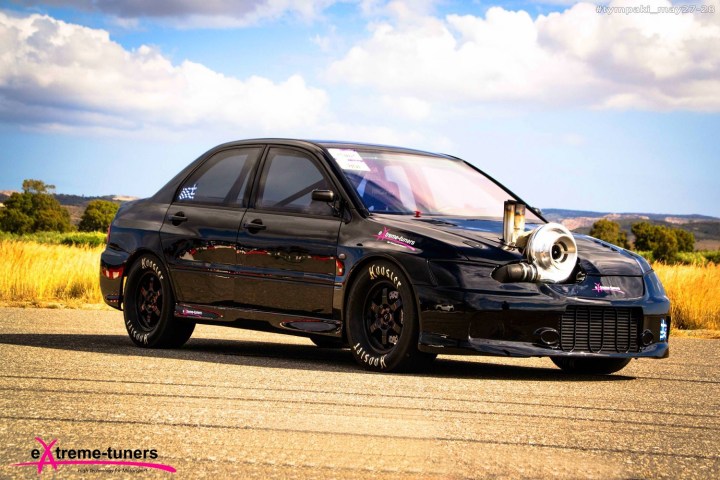
Extreme Tuners claims its creation is the fastest Lancer Evo in the world. At first glance, it’s immediately evident that a good chunk of the extra power comes from the massive turbo that’s popping right through the hood. It helps, especially given that it’s fitted with an ultra-light carbon fiber impeller, but that’s just the tip of the iceberg (metaphorically, of course, as an iceberg would melt in the blink of an eye under the hood of this super-sedan).
Pop open the hood, and you’ll see a 1.8-liter four-cylinder engine equipped with alloy connecting rods and pistons, a crankshaft made out of tungsten, and titanium valves, among other modifications. It revs to 13,000 rpm, which apparently blows the mind of the standard tachometer, and it generates a little over 2,100 horsepower, though the clutch would rather not have to deal with that much grunt. A vast majority of the updated components were designed and built in-house by Extreme Tuners, a company that has been in the business of making fast cars go really, really fast since 1999.
The engine was tuned to 1,700 horsepower when it sprinted down a drag strip in Greece and set the fastest quarter-mile time ever for a Lancer Evo: 7.902 at 185 mph, which means it can smoke even the vaunted Dodge Challenger Demon, hands down. It sounds awesome, and it is when you watch the video, but it must be a terrifying experience when you’re behind the wheel. Just look at the way the car squirms as it accelerates down the track. It requires constant steering inputs in order to stay in a straight line.
The turbo four sends its prodigious amount of power to all four wheels via a sequential gearbox and slick Hoosier tires. From the back, it looks almost stock with the notable exception of a parachute that deploys in case the brakes call it a day halfway through the drag strip. With 2,000 horses under the hood, we’d say the parachute isn’t there just for looks.




